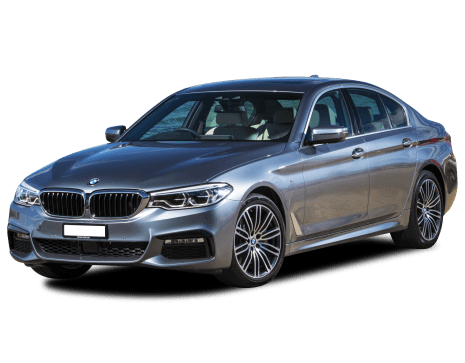
What's on this page
BMW 5 Series 2024
This is what Chris Thompson liked most about this particular version of the BMW 5 Series: Lighter weight, more nimble than i5, Not too much more expensive than before, Egalitarian features for a base model
The BMW 5 Series Sedan competes with similar models like the Mercedes-Benz E-Class, Audi A6 and Tesla Model S in the Over $80k category category.
BMW 5 Series 2024 Price and Specs
Pricing guides
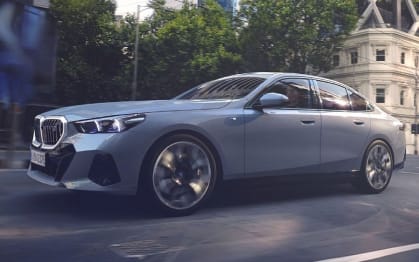
| BMW 5 Series Model | Body Type | Specs | Price | |
|---|---|---|---|---|
| 5 20I M Sport Mhev | Sedan | 2.0L — 8 SP | $114,900 | |
BMW 5 Series 2024 Q&As
Check out real-world situations relating to the BMW 5 Series here, particularly what our experts have to say about them.
-
Should I buy an electric car now or later?
It’s definitely true that the march of new-car technology is making big changes to the cars we’re being offered almost on a monthly basis. So, if your current car is just three years old, it might be worth holding on to it and waiting for the next big thing to arrive in showrooms. Certainly, by trading-in at just three years, you’ll pretty much max out the depreciation you’ll suffer in financial terms.
But by waiting, you might find that you can buy an electric vehicle and be able to tap into newer and better infrastructure that will be in place in another few years, rather than put up with the relatively sparse charging-station network currently in this country.
At the moment, a hybrid or plug-in hybrid is a pretty good way to go, provided you use the vehicle mostly in an urban setting, rather than long-distance freeway journeys where the hybrid tech is less advantageous. A hybrid is not exactly future-proof, but it’s a good next step for a lot of Australian car-owners.
As for what brand is best, the tech is getting better and better as time goes by, so it’s likely to be build date rather than brand that will determine the efficiency of the vehicle in question. That said, car owners can’t hold off forever when it comes to upgrading, so for the moment, a hybrid or plug-in hybrid is a logical next car. We’re particularly impressed by the current-model Toyota Camry which is good value to buy, a classy driving experience and offers hybrid fuel efficiency in the right environment. Such cars will be a lot of Australian families’ first hybrid, and rightly so.
Read More: 10 best hybrid vehicles in Australia
Show more -
Why is the coolant system on my 2004 BMW 525i losing pressure?
Did you replace the coolant tank because the vehicle was losing coolant in the first place? If so, there’s a chance that even though the coolant tank is brand new, there could be a leak from somewhere else in the system (that’s allowing the system to lose pressure, as you’ve identified). Possibilities include the radiator itself or even a head gasket, not to mention any one of a number of plastic fittings that control the flow of coolant to the engine and the car’s heating system. But don’t rule out the simple stuff, either; even the humble radiator cap or loose hose-clamp can allow pressure to leak from a cooling system.
The problem with a lot of imported cars is that they tend to use lots of plastic components in their plumbing systems. As they age (and at 16 years old, your car is hardly in the first flush of youth) these fittings and couples become brittle and can begin to leak or even fall apart altogether. In colder climates, these plastic bits and pieces don’t present the same problems to the same degree, but here in Australia, our hot-climate heat-cycles are not appreciated by some makes and models. Combine that with a modern, pressurised cooling system, and you have yourself a problem.
Show more -
BMW 535 2011: Using fuel additives
I can’t see any reason for using a fuel additive, particularly as you use high-octane fuel.
Show more -
BMW 5-Series 2006: Where is the oil tank located?
Oil is added through the cap on the rocker cover on top of the engine, fuel is added through the filler cap on the right rear quarter panel. If in doubt check the owner's manual.
Show more
BMW 5 Series VS the competition
BMW 5 Series 2024 Interior
As standard, the interior is upholstered in synthetic leather, Alcantara, or depending on the grade Merino leather.
The interior is spacious and relatively simple, with physical controls in the centre console and a pair of large screens headlining the dash.
BMW 5 Series 2024 Dimensions
Dimensions for the 2024 BMW 5 Series are dependent on which body type is chosen. The maximum width and height is 1900mm x 1515mm and can vary on the basis of model.

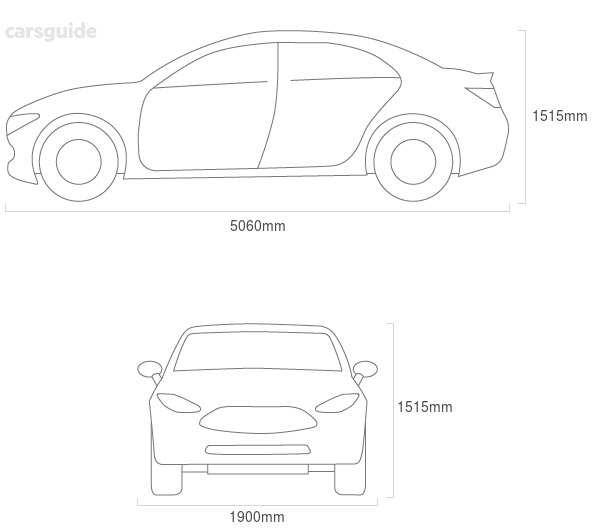
| BMW 5 Series Model | Body Type | Height x Width x Length | Ground Clearance | |
|---|---|---|---|---|
| 5 20I M Sport Mhev | Sedan | 1515x1900x5060 mm | 154 mm | |
BMW 5 Series 2024 Accessories
Standard in the 5 Series is 12.3-inch instrument display and a 14.9-inch multimedia display with BMW's Operating System 8.5, plus a head-up display, ambient lighting, wireless phone charging tray and BMW’s ‘new’ Interaction Bar are included.
Adaptive LED headlights, automatic boot opening, an M design kit with front and rear aprons, side sills, and BMW’s Iconic Glow kidney grille surround are found outside.
The i5 gains over the petrol variant a Merino leather interior, metallic paint, a Bowers & Wilkins surround sound system and aerodynamic 20-inch wheels standard.
BMW 5 Series 2024 Fuel consumption
Fuel consumption for the 2024 BMW 5 Series is dependent on the type of engine, transmission, or model chosen. The BMW 5 Series is available with the following fuel type: —.
| BMW 5 Series Model | Body Type | Specs | Fuel Consumption | |
|---|---|---|---|---|
| 5 20I M Sport Mhev | Sedan | 2.0L,—,8 SP | — | |
BMW 5 Series 2024 Engine
The 520i has a turbocharged 2.0-litre four cylinder puts out a modest 153kW and 330Nm, with power and torque sent to the rear wheels via an eight-speed automatic transmission.
The mid-spec eDrive40 has a rear-mounted electric motor capable of 250kW/430Nm, while the M60 has front- and rear-mounted motors for all-wheel drive and a total 442kW/820Nm.
BMW 5 Series 2024 Wheel size
Wheel size for the 2024 BMW 5 Series will vary depending on model chosen, although keep in mind that many manufacturers offer alternate wheel sizes as options on many models.The wheel size available will alter the range of tyres available to be fitted.
| BMW 5 Series Model | Body Type | Front Tyre Size | Front Rim | Rear Tyre Size | Rear Rim | |
|---|---|---|---|---|---|---|
| 5 20I M Sport Mhev | Sedan | 245x45 R19 | — | 245x45 R19 | — | |
BMW 5 Series 2024 Seats
The BMW 5 Series has five seats, with the main four seats boasting generous space thanks to the car's long wheelbase and five-metre length.
The central rear seat is comfortable by sedan standards for an adult on a relatively short trip.
BMW 5 Series 2024 Speed
The base petrol 520i will hit 100km/h in a claimed 7.5 seconds, while the electric eDrive40 takes less as 6.0 seconds.
The M-tuned i5 M60 xDrive is rather quick though, with a claimed 3.8 seconds.
BMW 5 Series News
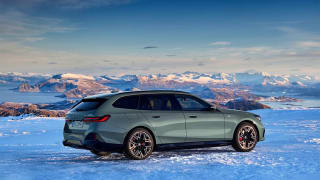
Powerful and purposeful 2024 BMW i5 Touring coming to Australia: Pure electric car heads new 5 Series wagon family with monster performance and traditional long-roof style
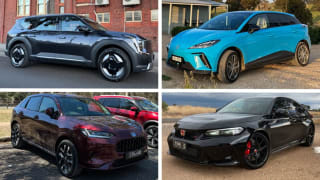
Byron Mathioudakis' Top 5 cars of 2023: From Honda Civic Type R to Kia EV9 and beyond

Maximum five-star ANCAP safety results for 2024 BMW 5 Series, Kia EV9 and Mercedes-Benz EQE SUV
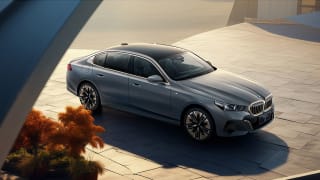
Higher 5: 2024 BMW i5 and 5 Series sedan gets more kit and a longer wheelbase for China
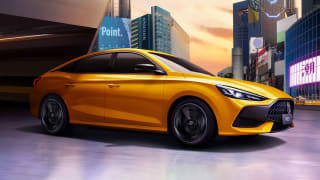
Best hatchbacks and sedans arriving in 2023
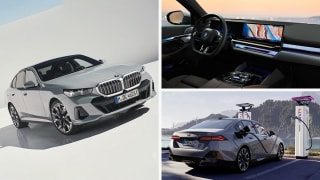
2024 BMW 5 Series price and specs: Sad you can't buy a Tesla Model S EV? BMW's new electric car will turn that frown upside down!
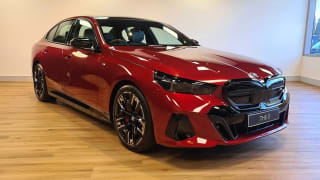
Premium plugs in! BMW i5 could be the brand's turning point for electric cars in Australia
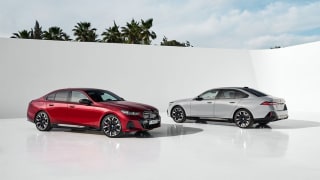
The 5 arrives! 2024 BMW 5 Series confirmed for Australian launch this year with electric car versions set to take on Mercedes-Benz EQE and Porsche Taycan
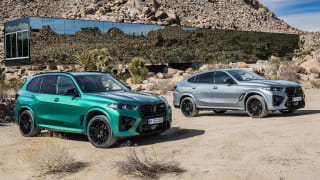
Up and up! BMW Australia increases pricing across entire line-up for the second time this year
BMW 5 Series 2024 Range
BMW claims the petrol 520i sips 6.7 litres per 100km from its 60-litre fuel tank, so it has a theoretical range of 896km if it was possible to achieve the claimed fuel consumption figure for the duration of the whole tank.
The i5 variants both use the same 84kWh battery, the eDrive40 using 16.56kWh per 100km, and the M60 using 18kWh.
The eDrive40 has a claimed 550km maximum range, while the M60 has a 506km figure.



